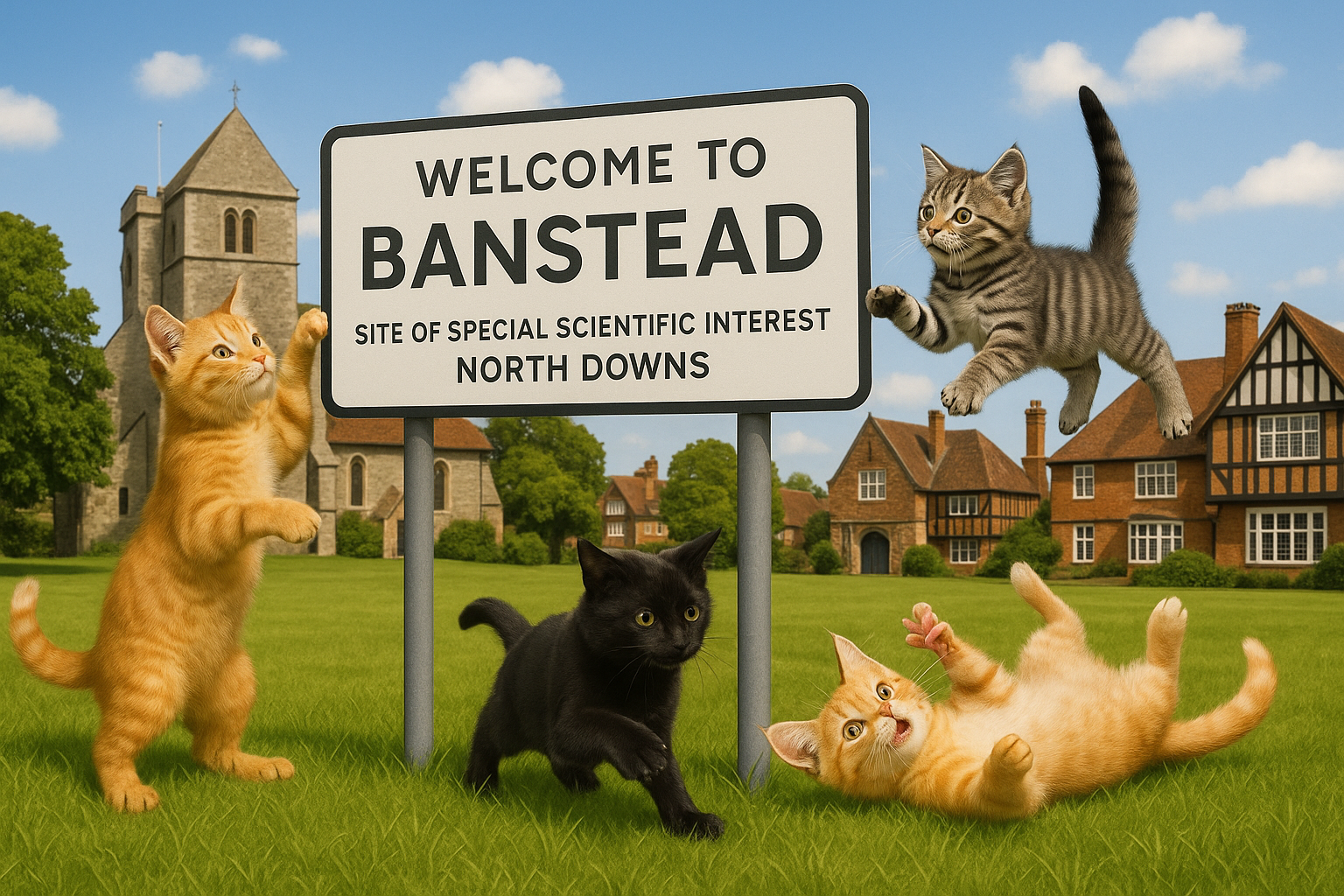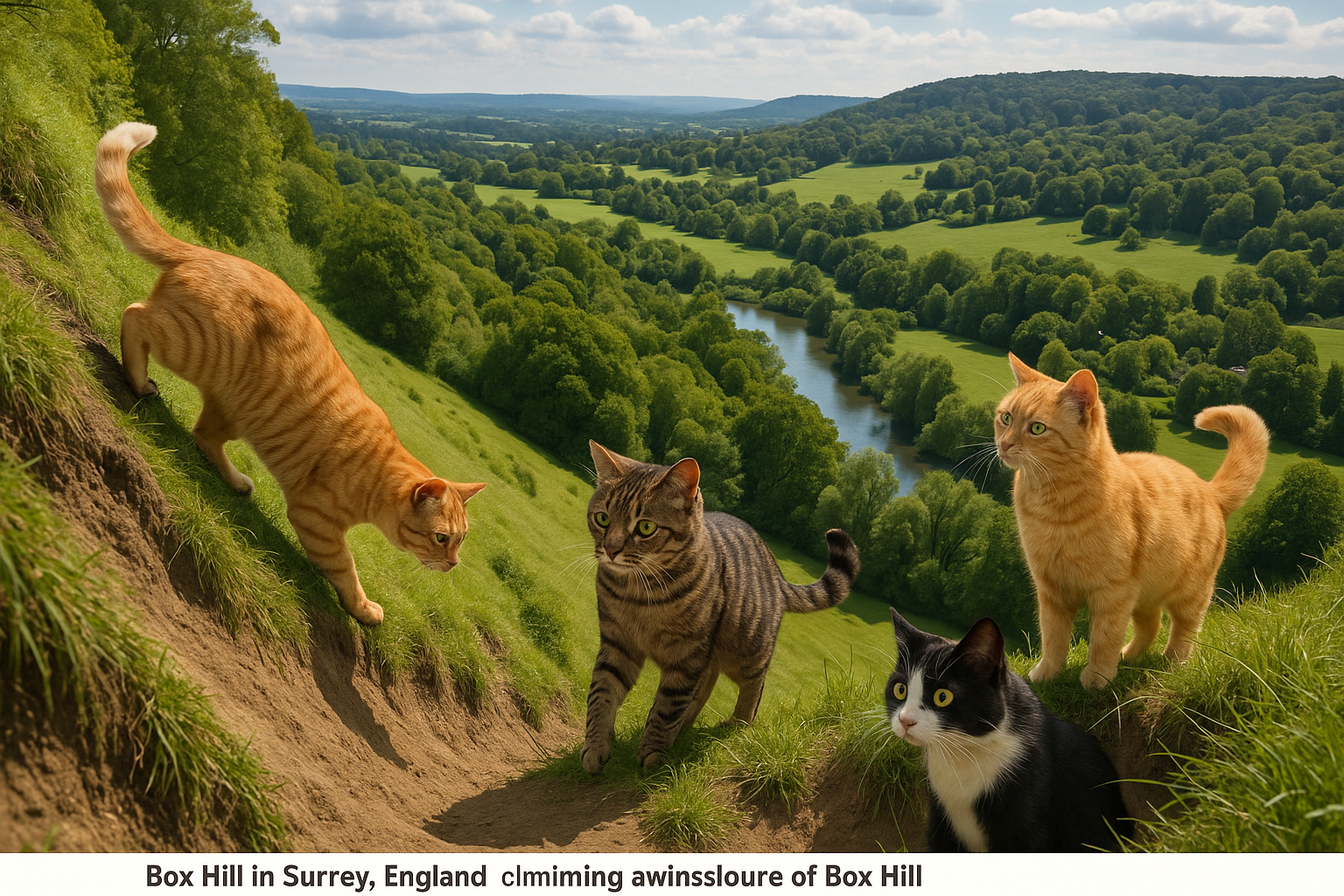Exploring Banstead: A Town in Surrey's Green Belt
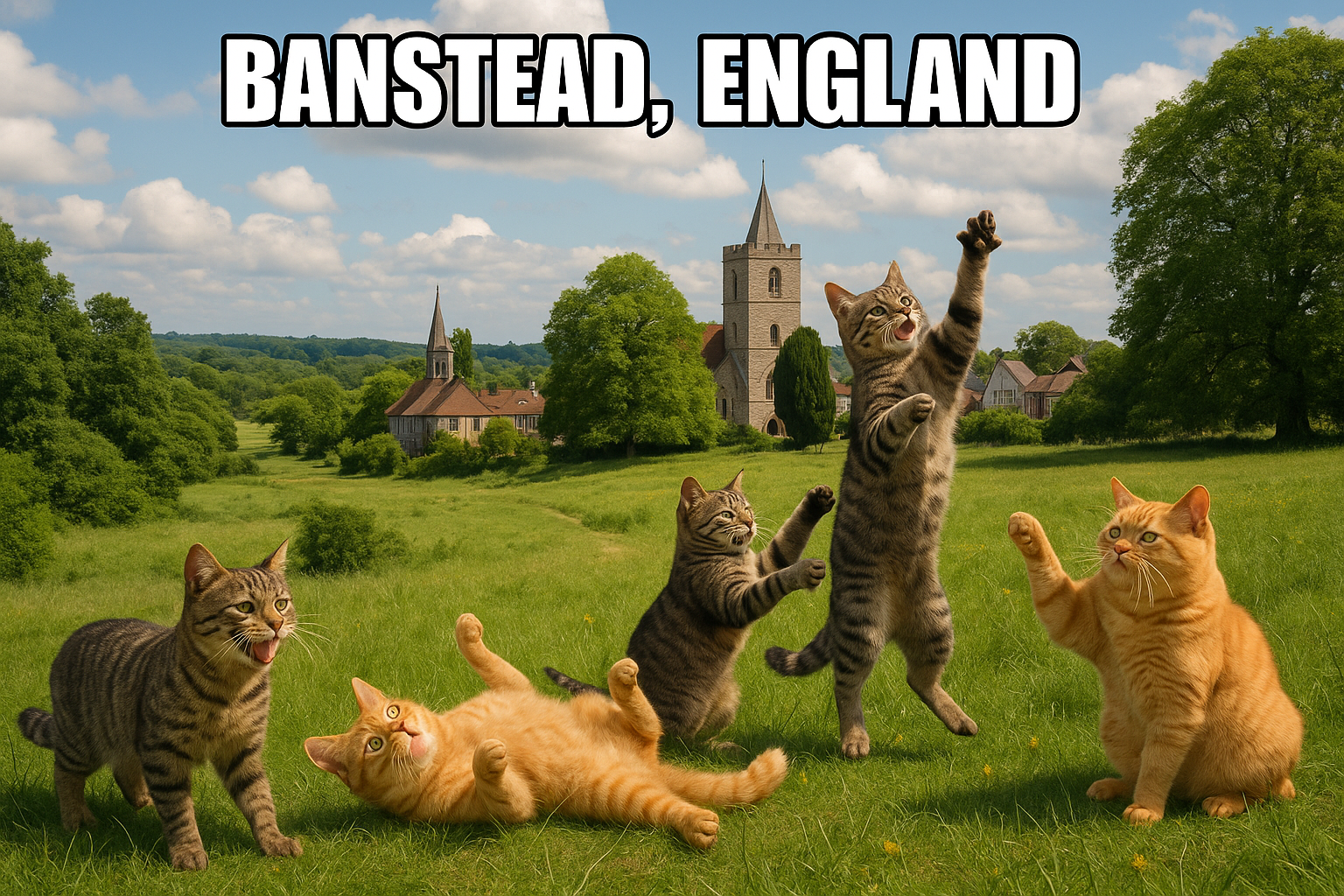
<strong>Banstead</strong> is a town in the borough of <a href="https://en.wikipedia.org/wiki/Reigate<em>and</em>Banstead">Reigate and Banstead</a> in <a href="https://en.wikipedia.org/wiki/Surrey">Surrey</a>, England. It is 3 miles (5 km) south of <a href="https://en.wikipedia.org/wiki/Sutton,<em>London">Sutton</a>, 7 miles (11 km) south-west of <a href="https://en.wikipedia.org/wiki/Croydon">Croydon</a>, 7 miles (11 km) north of <a href="https://en.wikipedia.org/wiki/Reigate">Reigate</a>, 8.5 miles (14 km) south-east of <a href="https://en.wikipedia.org/wiki/Kingston-upon-Thames">Kingston-upon-Thames</a>, and 14 miles (23 km) south of <a href="https://en.wikipedia.org/wiki/Central</em>London">Central London</a>. On the <a href="https://en.wikipedia.org/wiki/North<em>Downs">North Downs</a>, it is on three of the four main compass points separated from other settlements by open area <a href="https://en.wikipedia.org/wiki/Buffer</em>zone">buffers</a> with <a href="https://en.wikipedia.org/wiki/Metropolitan<em>Green</em>Belt">Metropolitan Green Belt</a> status. <a href="https://en.wikipedia.org/wiki/Banstead<em>Downs">Banstead Downs</a>, although a fragment of its larger historic area and spread between newer developments, is a <a href="https://en.wikipedia.org/wiki/Site</em>of<em>Special</em>Scientific<em>Interest">Site of Special Scientific Interest</a> (SSSI). One of the Banstead <a href="https://en.wikipedia.org/wiki/Wards</em>of<em>the</em>United<em>Kingdom">wards</a> is “Banstead Village”. The <a href="https://en.wiktionary.org/wiki/contiguous">contiguous</a> ward of <a href="https://en.wikipedia.org/wiki/Nork,</em>Surrey">Nork</a>, which contains Banstead station, shares in many amenities of Banstead and is included in <a href="https://en.wikipedia.org/wiki/Surrey<em>County</em>Council">county-level</a> population analyses of Banstead but not the central-government-drawn Banstead Built-up Area. The latter takes in <a href="https://en.wikipedia.org/wiki/Burgh<em>Heath">Burgh Heath</a> and held 15,469 residents as at the 2011 census.<a href="https://en.wikipedia.org/wiki/Banstead#cite</em>note-2">[2]</a>

Reigate and Banstead is a local government district with borough status in Surrey, England. Its council is based in Reigate and the borough also includes the towns of Banstead, Horley and Redhill. Parts of the borough are within the Surrey Hills, a designated Area of Outstanding Natural Beauty. Northern parts of the borough, including Banstead, lie inside the M25 motorway which encircles London. The neighbouring districts are Tandridge, Crawley, Mole Valley, Epsom and Ewell, Sutton and Croydon, the latter two being London boroughs.

Surrey () is a ceremonial county in South East England. It is bordered by Greater London to the northeast, Kent to the east, East and West Sussex to the south, and Hampshire and Berkshire to the west. The largest settlement is Woking. The county has an area of 1,663 km2 (642 square miles) and a population of 1,214,540. Much of the north of the county forms part of the Greater London Built-up Area, which includes the suburbs within the M25 motorway as well as Woking (103,900), Guildford (77,057), and Leatherhead (32,522). The west of the county contains part of built-up area which includes Camberley, Farnham, and Frimley and which extends into Hampshire and Berkshire. The south of the county is rural, and its largest settlements are Horley (22,693) and Godalming (22,689). For local government purposes Surrey is a non-metropolitan county with eleven districts. The county historically included much of south-west Greater London but excluded what is now the borough of Spelthorne, which was part of Middlesex. It is one of the home counties. The defining geographical feature of the county is the North Downs, a chalk escarpment which runs from the south-west to north-east and divides the densely populated north from the more rural south; it is pierced by the rivers Wey and Mole, both tributaries of the Thames. The north of the county is a lowland, part of the Thames basin. The south-east is part of the Weald, and the south-west contains the Surrey Hills and Thursley, Hankley and Frensham Commons, an extensive area of heath. The county has the densest woodland cover in England, at 22.4 per cent.

Sutton is a town in the London Borough of Sutton in South London, England. It is the administrative headquarters of the Outer London borough. It is 10 miles (16 km) south-southwest of Charing Cross, one of the fourteen metropolitan centres in the London Plan. An ancient parish originally in the county of Surrey, Sutton is recorded in the Domesday Book of 1086 as having two churches and about 30 houses. Its location on the London to Brighton turnpike from 1755 led to the opening of coaching inns, spurring its growth as a village. When it was connected to central London by rail in 1847, it began to grow into a town, and it expanded further in the 20th century. It became a municipal borough with Cheam in 1934, and became part of Greater London in 1965. Sutton has the largest library in the borough, several works of public art and four conservation areas. It is home to several large international companies and the sixth most important shopping area in London, centred on Sutton High Street. Sutton railway station is the largest station in the borough, offering frequent services by Southern and Govia Thameslink to Central London and other destinations, including Wimbledon and St Albans. It is home to the Royal Marsden Hospital and the Institute of Cancer Research. Future plans for Sutton as of 2024 include creating the world's second largest cancer research campus and improving connectivity to central London and the London Underground through the Sutton Link tram project (currently awaiting funding).
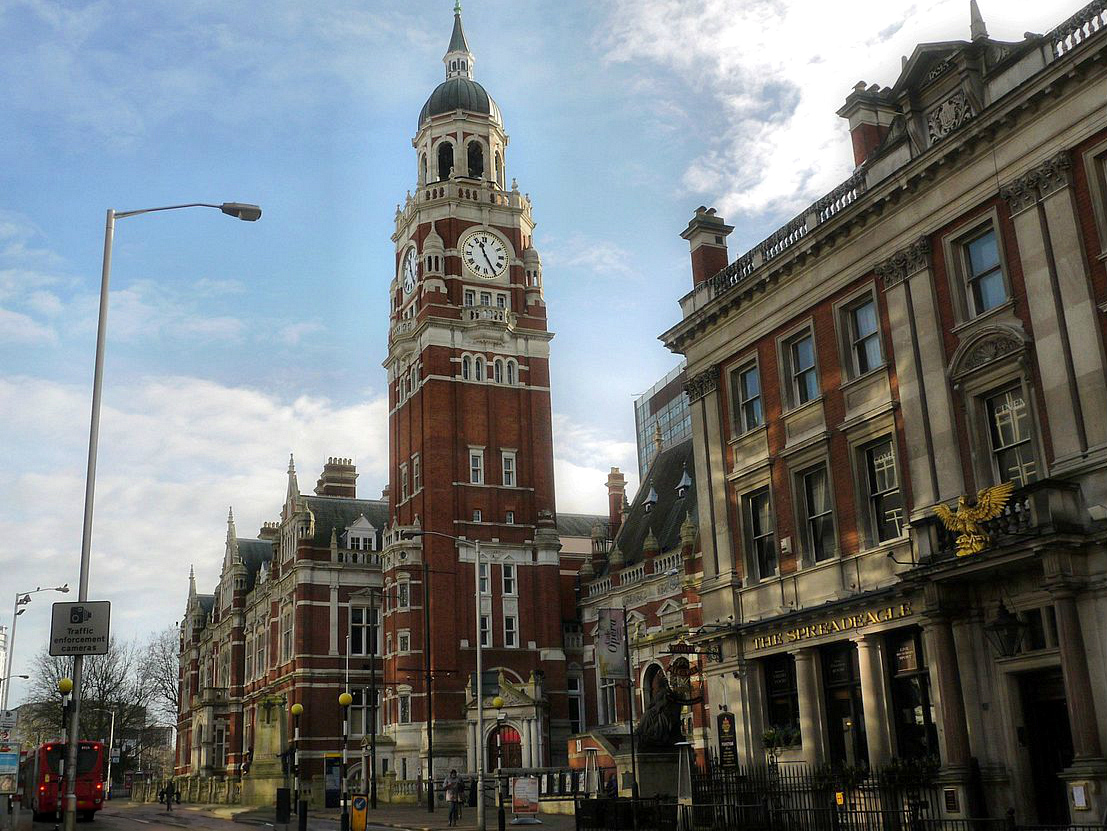
Croydon is a large town in South London, England, 9.5 miles (15 km) south of Charing Cross. Part of the London Borough of Croydon, a local government district of Greater London; it is one of the largest commercial districts in Greater London, with an extensive shopping area. The entire town had a population of 192,064 as of 2011, whilst the wider borough had a population of 384,837. Historically an ancient parish in the Wallington Hundred of Surrey, at the time of the Norman Conquest of England Croydon had a church, a mill, and around 365 inhabitants, as recorded in the Domesday Book of 1086. Croydon expanded in the Middle Ages as a market town and a centre for charcoal production, leather tanning and brewing, with the brewing industry in particular remaining strong for hundreds of years. The Surrey Iron Railway from Croydon to Wandsworth opened in 1803 and was an early public railway. Later 19th century railway building facilitated Croydon's growth as a commuter town for London. By the early 20th century, Croydon was an important industrial area, known for car manufacture, metalworking and Croydon Airport. In the mid 20th century these sectors were replaced by retailing and the service economy, brought about by massive redevelopment which saw the rise of office blocks and the Whitgift Centre, the largest shopping centre in Greater London until 2008. Historically, the town formed part of the County of Surrey, and between 1889 and 1965 a county borough, but it was amalgamated into Greater London in 1965. Croydon lies on a transport corridor between central London and the south coast of England, to the north of two high gaps in the North Downs, one taken by the A23 Brighton Road and the main railway line through Purley and Merstham and the other by the A22 from Purley to the M25 Godstone interchange. Road traffic is diverted away from a largely pedestrianised town centre, mostly consisting of North End. East Croydon railway station is a hub of the national railway system, with frequent fast services to central London, Brighton and the south coast. The town is also at the centre of the only tramway system in Southern England.
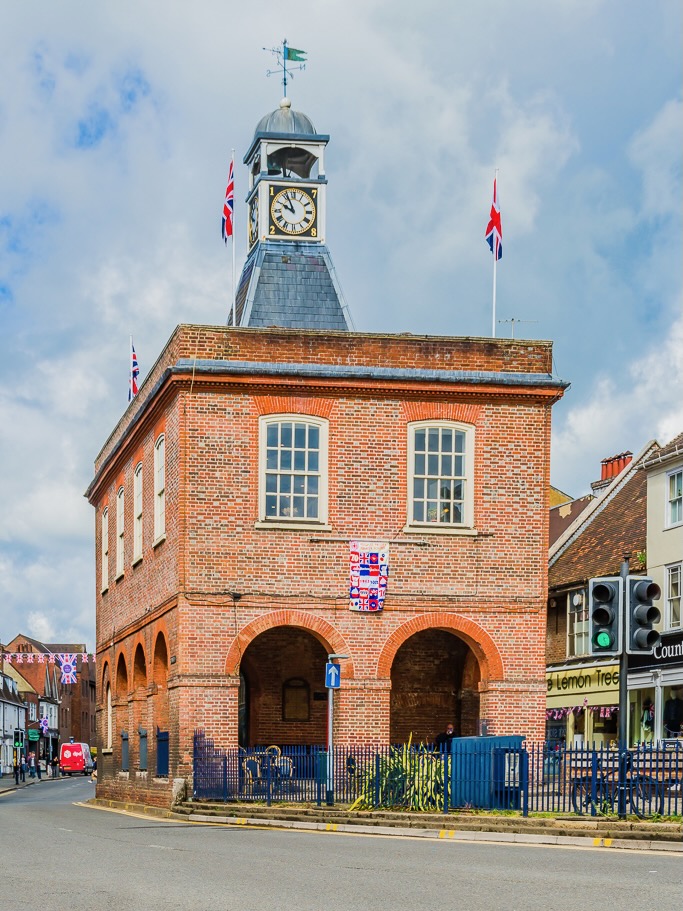
Reigate ( RY-gate) is a town in Surrey, England, around 19 miles (30 km) south of central London. The settlement is recorded in Domesday Book of 1086 as Cherchefelle, and first appears with its modern name in the 1190s. The earliest archaeological evidence for human activity is from the Paleolithic and Neolithic, and during the Roman period, tile-making took place to the north east of the modern centre. A motte-and-bailey castle was erected in Reigate in the late 11th or early 12th century. It was originally constructed of timber, but the curtain walls were rebuilt in stone about a century later. An Augustinian priory was founded to the south of the modern town centre in the first half of the 13th century. The priory was closed during the Reformation and was rebuilt as a private residence for William Howard, 1st Baron Howard of Effingham. The castle was abandoned around the same time and fell into disrepair. During the medieval and early modern periods, Reigate was primarily an agricultural settlement. A weekly market began no later than 1279 and continued until 1895. Key crops included oats, hops and flax, but there is no record of rye being grown in the local area. The economy initially declined in the 18th century, as new turnpike roads allowed cheaper goods made outside the town to become available, undercutting local producers. Following the arrival of the railways in the mid-19th century, Reigate began to expand and the sale of much of the priory estate in 1921 released further land for housebuilding. Reigate is part of the London commuter belt, and since 1974 it has been one of four towns in the borough of Reigate and Banstead. The borough council is based at the town hall in Castlefield Road, and Surrey County Council has its headquarters at Woodhatch Place. Much of the North Downs, to the north of Reigate, is owned by the National Trust, including Colley Hill, 722 feet (220 m) above ordnance datum (OD) and Reigate Hill 771 feet (235 m) above OD.
Unsupported Slack block type: rich_text

